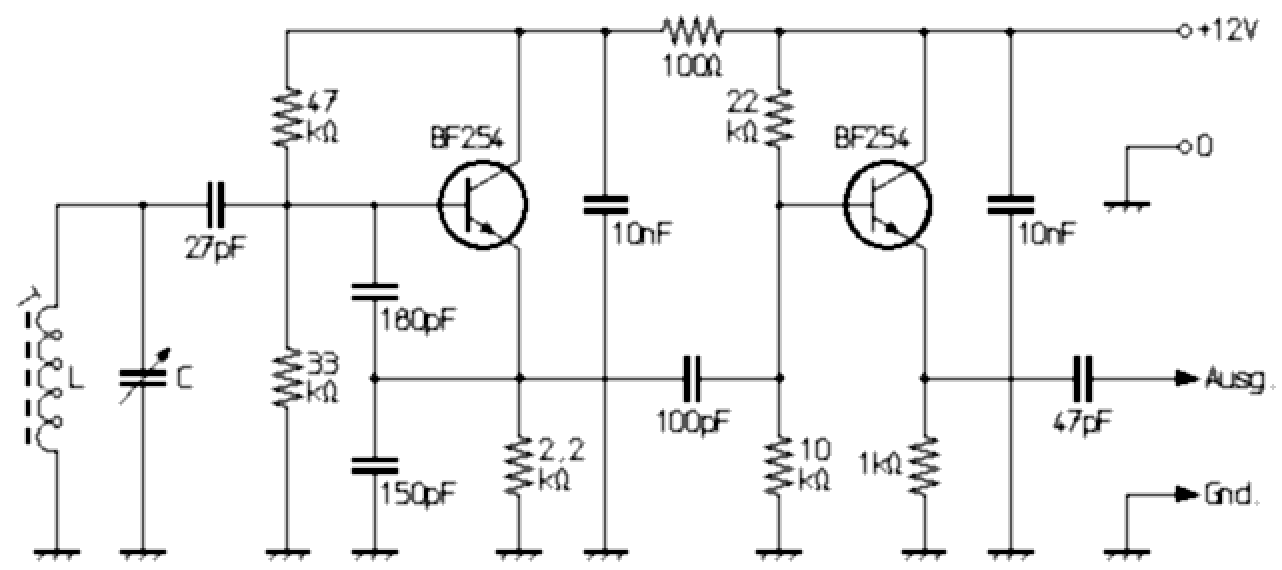Transistorized VFOs with a high frequency stability
Based on the Seiler principle transistor VFO
Frequency-variable oscillators allow you to set any frequency in a given range. It is called by Variable Frequency Oscillator for short as VFO. In the transmitter, it serves as control transmitter or, in the simplest case, form a single-stage transmitter. Also for receivers VFOs are needed. An often used in homemade amateur radio VFO circuit is because of her reputed good frequency stability of the Seiler oscillator, for which an example is shown here:

The circuit includes a buffer stage which is intended to prevent retroactive effects from the output, which frequency instabilitys may result. It is important to take into account the temperature sensitivity of the components used. This affects in particular the frequency-determining capacitors and the coil. Transistors also have capacities that change with temperature. By selecting capacitors with appropriate temperature coefficients, otherwise occurring temperature-dependent frequency changes can be compensated. In addition, to achieve a good frequency stability, a highly constant supply voltage is necessary.
High quality Clapp Franklin VFO with transistors
The Clapp-Franklin VFO illustrated here was presented in the book "Einseitenbandtechnik für den Funkamateur" (Single-Sideband Technology For The Radio Amateur) by Friedhelm Hillebrand. According to the information there, it should have an excellent frequency stability and thus well suited for SSB devices. The influence of temperature and voltage fluctuations is low. Nevertheless, a temperature compensation should be performed and a stabilized supply voltage should be used.

With the adjustable frequency range, the circuit is well suited for devices with an IF of 9 MHz. With only one mixer, the 80m and 20m bands are then captured (3.5 ... 4.0 resp. 14.0 ... 14.5 MHz). This principle can be used both on the transmitter side and the receiver side.
Voltage stabilizer for supply these VFOs
In order to achieve the best results with a variable frequency oscillator (VFO), it must be operated at a high-constant voltage. If there are changes in the operating voltage, they usually have a direct effect on the frequency generated. Above all, this namely would lead to voltage-dependent changes in the transistor capacitances acting parallel to the resonant circuit.

| A well-working stabilizer circuit that operates with single transistors is shown here. It works with a regulation with a target / actual value comparison based on a differential amplifier. During mains operation, it also suppresses a ripple voltage superimposed on the supply voltage, which could result in FM hum modulation. The VFOs shown work perfectly with a slightly reduced output voltage despite the lower operating voltage due to the stabilizer. |